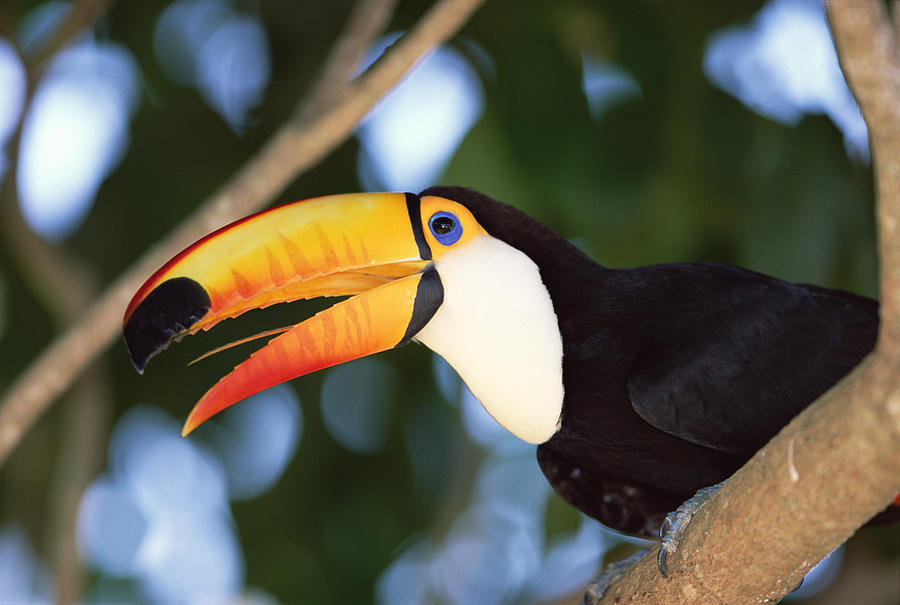


They are poor flyers, and usually hop from tree to tree.

In flight it alternates between a burst of rapid flaps with the relatively short, rounded wings, and gliding.
#TOCO TOUCAN SKIN#
It is also used to skin fruit and scare off predators which include jaguars, snakes, and weasels. It is typically seen in pairs or small groups. The long bill is useful for reaching things that otherwise would be out-of-reach. The toco toucan eats fruit (e.g., figs and Passiflora edulis) using its bill to pluck them from trees, but also insects, frogs, small reptiles, eggs and nestlings. It is therefore considered to be of Least Concern by BirdLife International. It has a large range and except in the outer regions of its range, it typically is fairly common. Because it prefers open habitats it is likely to benefit from the widespread deforestation in tropical South America. It is mainly a species of lowlands, but occurs up to 1750 m (5750 ft) near the Andes in Bolivia. It can be found in a wide range of semi-open habitats such as woodland, savanna and other open habitats with scattered trees, Cerrado, plantations, forest-edge, and even wooded gardens. It is, unlike the other members of the genus Ramphastos, essentially a non-forest species. It is resident, but local movements may occur. It only penetrates the Amazon in relatively open areas (e.g. Other disjunct populations occur along the lower Amazon River (Ilha de Marajó west approximately to the Madeira River), far northern Brazil in Roraima, and coastal regions of the Guianas. It occurs in northern and eastern Bolivia, extreme south-eastern Peru, northern Argentina, eastern and central Paraguay, eastern and southern Brazil(excluding southern Rio Grande do Sul, the dry regions dominated by Caatinga vegetation and coastal regions between Ceará and Rio de Janeiro). It also has a rattling call and will bill-clack. Its voice consists of a deep, coarse croaking, often repeated every few seconds. Among standard measurements, the wing chord is 22 to 26 cm (8.7 to 10.2 in), the tail is 14.1 to 17.9 cm (5.6 to 7.0 in) and the tarsus is 4.8 to 6.5 cm (1.9 to 2.6 in). Other than the size difference, there is no external differences between the sexes. Juveniles are duller and shorter-billed than adults. Body weight in these birds can vary from 500 to 876 g (1.102 to 1.931 lb), with males averaging 723 g (1.594 lb) against the smaller female, which averages 576 g (1.270 lb). This species is the largest toucan and the largest representative of the order Piciformes. The total length of the species is 55–65 cm (22–26 in). The tongue is nearly as long as the bill and very flat. The most noticeable feature, however, is its huge bill, which measures from 15.8 to 23 cm (6.2 to 9.1 in) in length, which is yellow-orange, tending to deeper reddish-orange on its lower sections and culmen, and with a black base and large spot on the tip. It looks heavy, but as in other toucans it is relatively light because the inside largely is hollow. This blue skin is surrounded by another ring of bare, orange skin. What appears to be a blue iris is actually thin blue skin around the eye. The toco toucan has a striking plumage with a mainly black, a white throat, chest and uppertail-coverts, and red undertail-coverts.


 0 kommentar(er)
0 kommentar(er)
